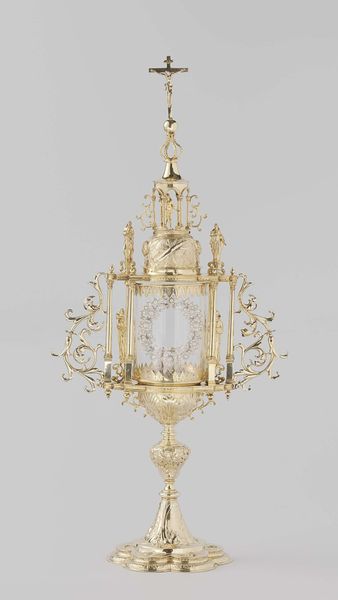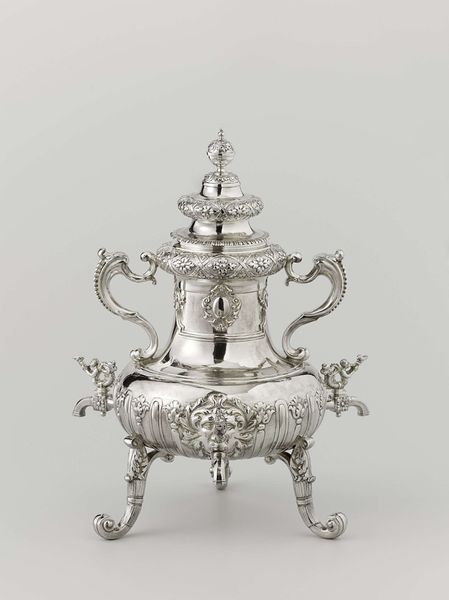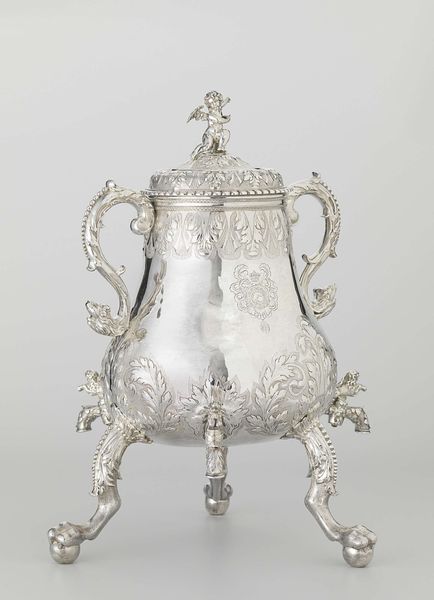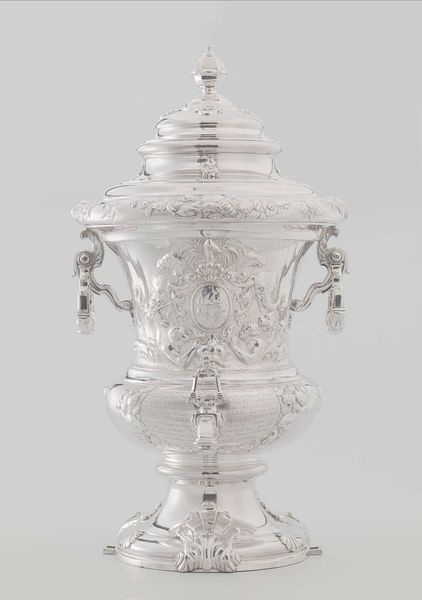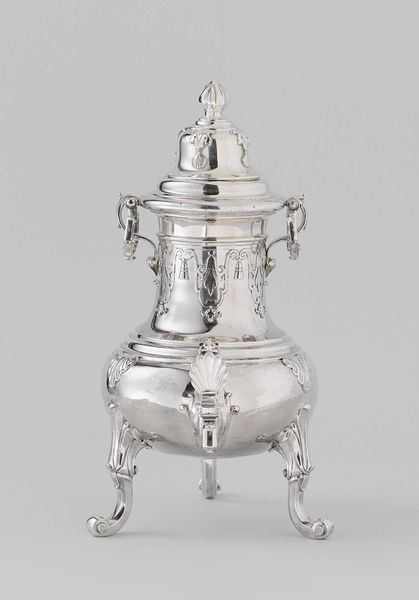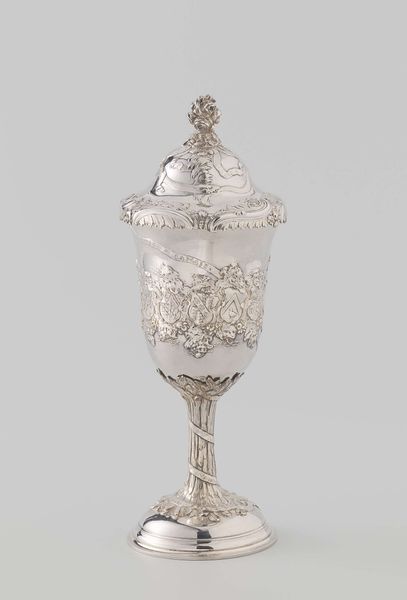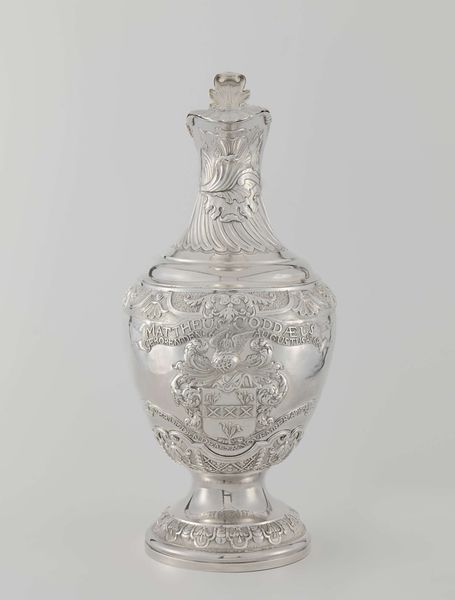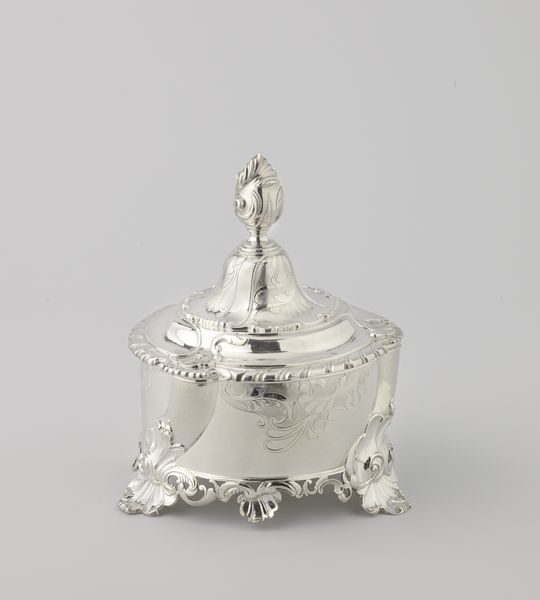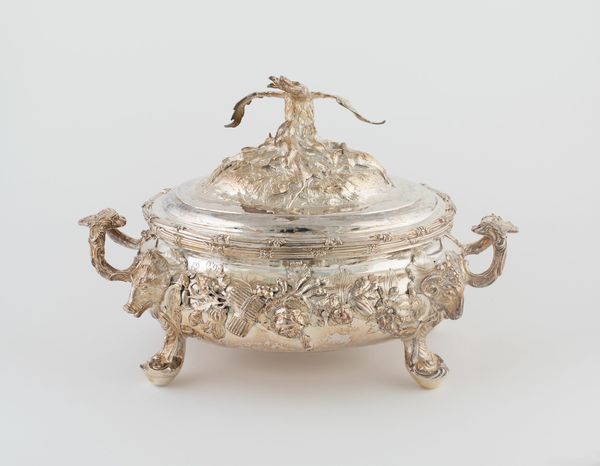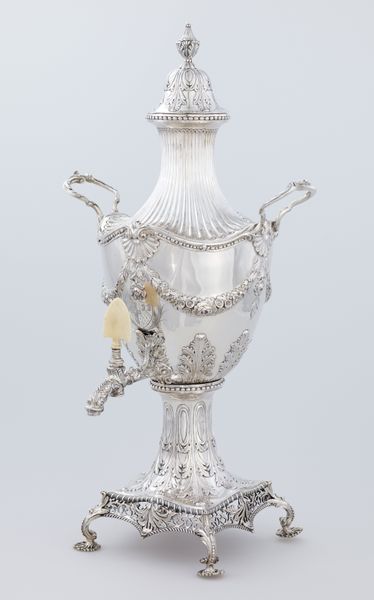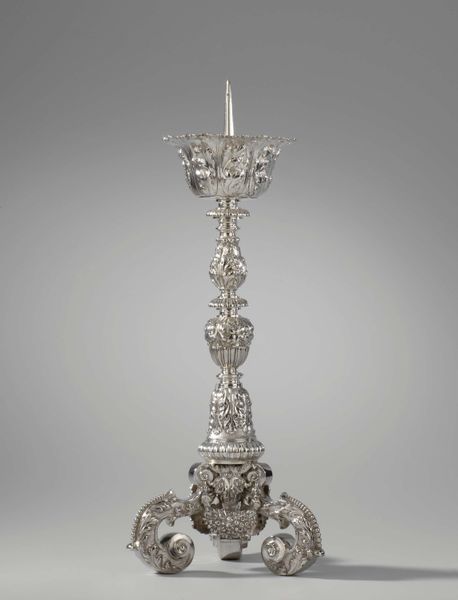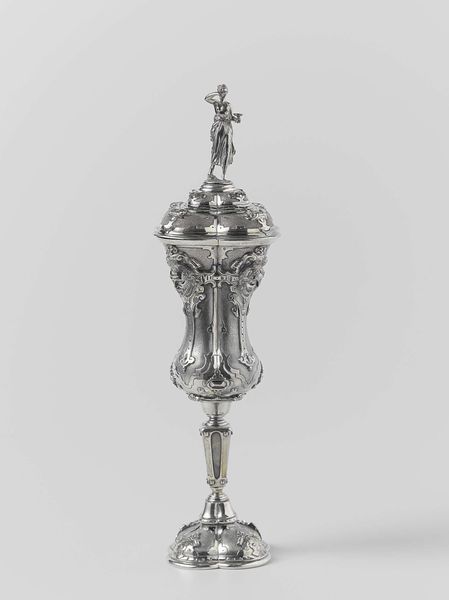
Kraantjeskan, met drie kraantjes, met gedreven rocailles, bloem- en vlammotieven 1761
0:00
0:00
Dimensions: height 45.0 cm, width 32.7 cm, depth 32.7 cm, width 23.0 cm, depth 23.0 cm, weight 3209 gr
Copyright: Rijks Museum: Open Domain
This silver Kraantjeskan, or water jug, was made by Jacobus Rensing, who was born in the Netherlands in 1723. With its three taps, elaborate Rococo style, and decorative motifs, the jug reflects the cultural and social values of its time. Rococo was popular among the European elite. The style is characterized by asymmetry and ornamental decoration which represented wealth and status. The jug’s design, featuring floral patterns and flame-like forms, demonstrates the influence of nature, a common theme in Rococo art. The Kraantjeskan's function as a water jug could also be interpreted through the lens of social history. In 18th-century Europe, access to clean water was often a privilege, and owning such an ornate jug would have been a sign of wealth. To fully understand this artwork, historians often turn to archival sources. These provide insights into the cultural context, artistic practices, and institutional frameworks that shaped its creation. The meaning of art is always contingent on its social and institutional context.
Comments
No comments
Be the first to comment and join the conversation on the ultimate creative platform.
